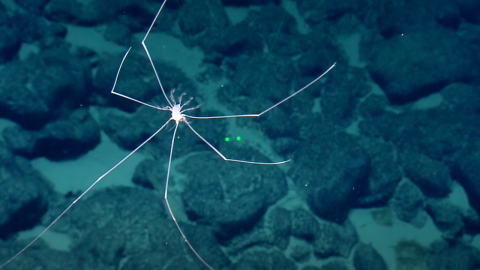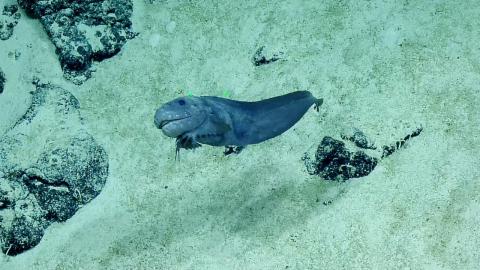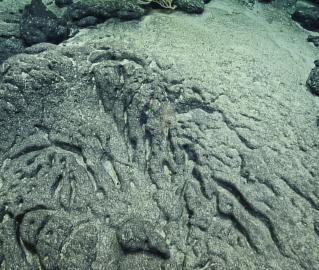Submit your Comments on the Proposed Pacific Remote Islands National Marine Sanctuary
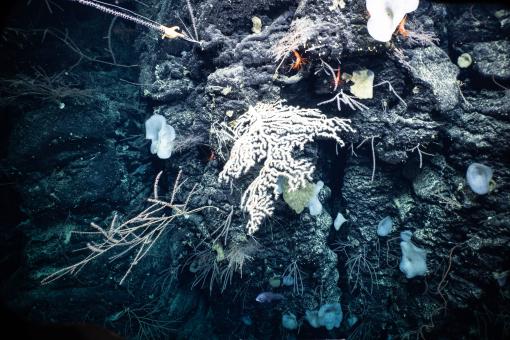
You have through June 2, 2023, to add your voice on the proposed Pacific Remote Islands National Marine Sanctuary!
U.S. waters surrounding Kingman Reef and Palmyra Atoll are home to some of the most pristine marine ecosystems on Earth and the region was recently proposed to become a national marine sanctuary. As E/V Nautilus explores the deep sea and ancient seamounts within the proposed sanctuary area, our audiences have the unique opportunity to get involved and share their comments with the National Oceanic and Atmospheric Administration (NOAA) on the proposed Pacific Remote Islands National Marine Sanctuary.
While recent expeditions have increased our baseline knowledge of the Pacific Remote Islands Region, large areas remain completely unexplored. Ocean Exploration Trust aims to provide a rich foundation of publicly-accessible data to enable follow-on exploration, research, and management activities. Exploration of the deep sea here is urgently needed to address management and science needs, including a better understanding of the natural and cultural resources, biogeographic patterns of species distributions, and the geological context of the region.

About The Proposal
In April, NOAA launched the designation process to consider a new sanctuary in waters around the U.S. Pacific Remote Islands, which include Palmyra, Kingman, Baker, Howland, Jarvis, Johnston, and Wake. The proposed national marine sanctuary would include the marine areas within the existing Pacific Remote Islands Marine National Monument, as well as those currently unprotected submerged lands and waters to the full extent of the U.S. Exclusive Economic Zone, an area totaling about 770,000 square miles.
The atolls, shoals, seamounts, banks, and reefs surrounding the U.S. Pacific Remote Islands are home to some of the most diverse and remarkable tropical marine ecosystems on the planet, but are becoming increasingly vulnerable to impacts from climate change, invasive species, and marine debris.
The proposed sanctuary would not only protect a rich and unique marine biodiversity, but also honor the ancestral, historical, and cultural connections of this remote region. Native Hawaiian, Samoan, Chamorro, Carolinian, and many other Pacific Island Indigenous Peoples, have voyaged across this vast expanse of the Central and Western Pacific Ocean over thousands of years.
How to Get Involved
Public input is a key part of the national marine sanctuary designation process. The public is invited to comment on the proposed sanctuary designation through June 2, 2023, through the Federal eRulemaking Portal, www.regulations.gov, by searching for docket number NOAA-NOS-2023-0052, and click the "Comment Now!" icon.
The process to designate a new sanctuary is highly public and participatory, with steps including scoping and public input, sanctuary proposal development with environmental impact statements and draft management plan development, further public review, and finally NOAA decision on designation based on the process which will outline protections and regulations for Congressional review.
Through this public comment, NOAA will gather input on the proposed Sanctuary as described in the Notice of Intent published in the Federal Register, including on boundaries, compatible uses, threats, science, and education initiatives, among others. Public comments that are received will assist the agency with drafting designation documents, including formulating potential alternatives and an environmental impact statement.
Submit your public comment here through June 2, 2023
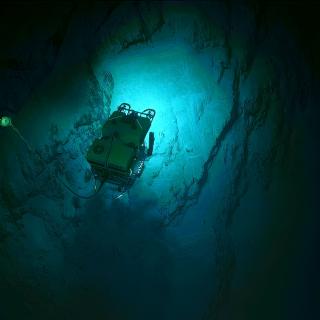
Exploring Deep Sea Habitats Near Kingman Reef & Palmyra Atoll
Our first live expedition of 2023 brings us back to the region of Kingman Reef and Palmyra Atoll as part of our ongoing effort to explore the deep ocean in and around the Pacific Remote Islands Marine National Monument (PRIMNM) through the Ocean Exploration Cooperative Institute.
